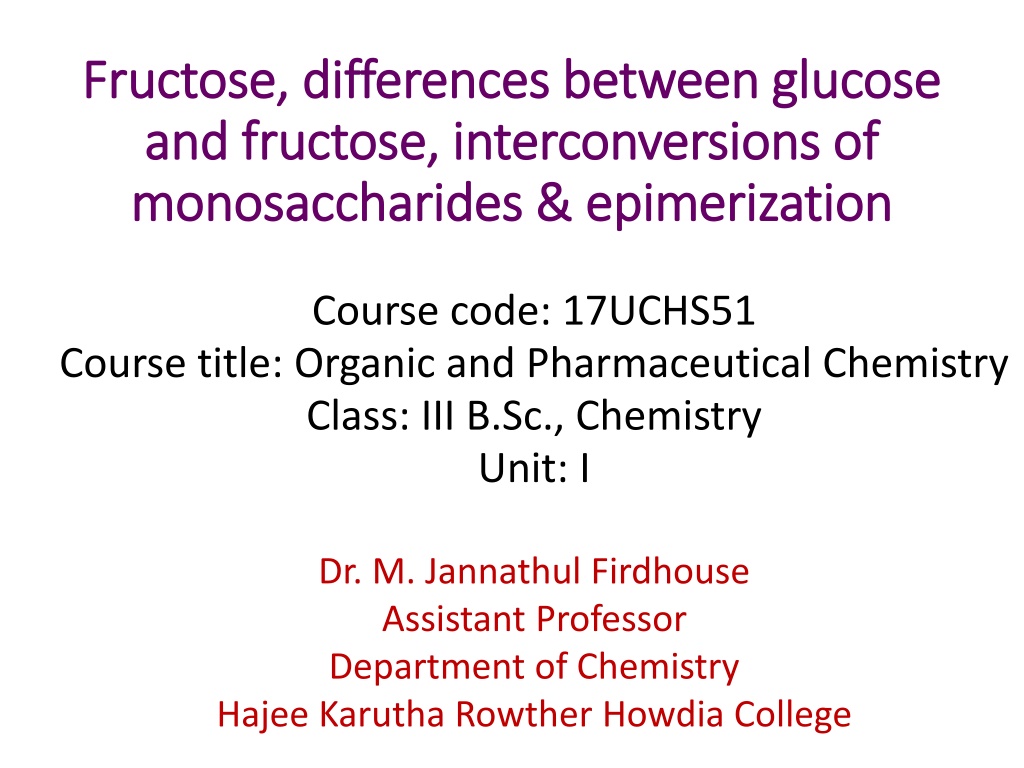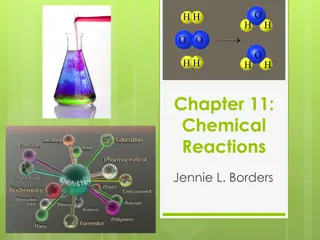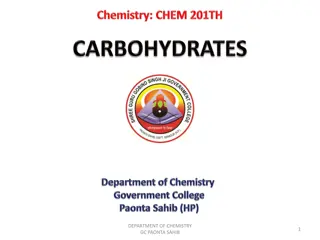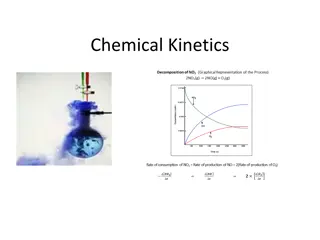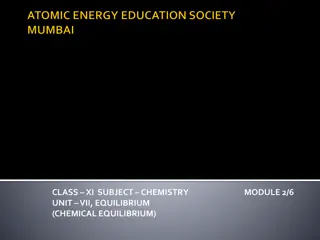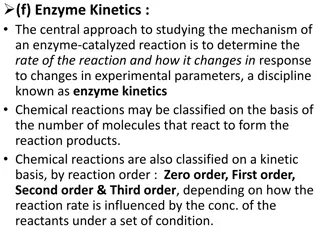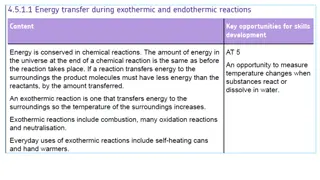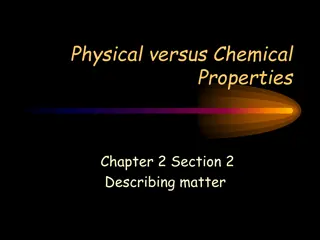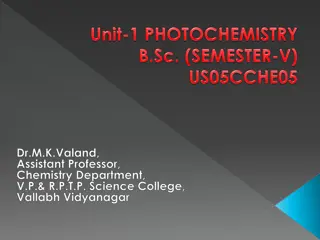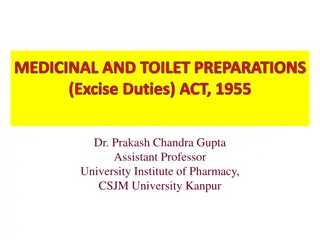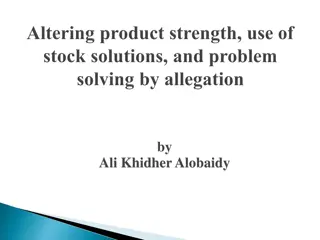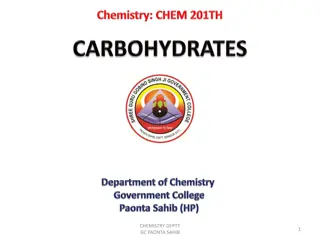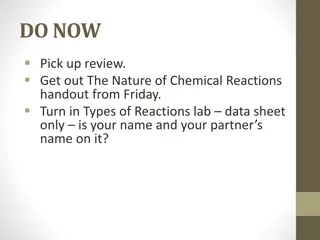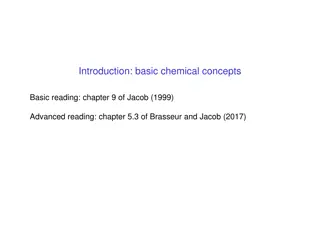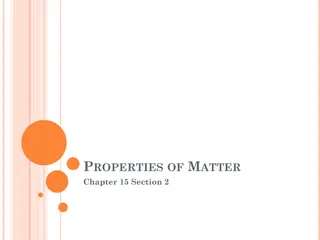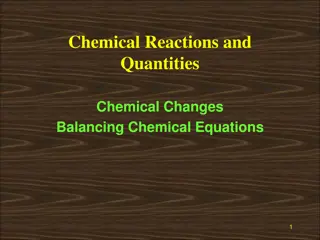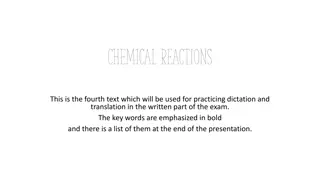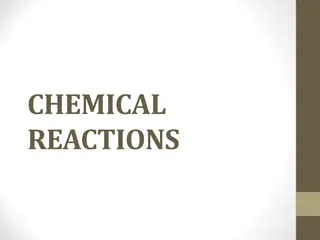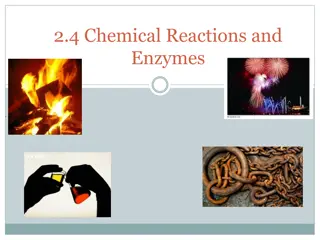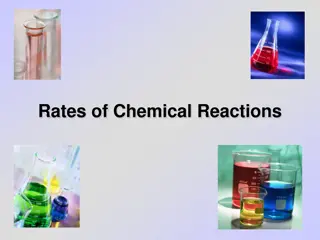All About Fructose: Properties, Preparations, and Chemical Reactions
Fructose, also known as fruit sugar, is a ketohexose naturally occurring in various sources. This article covers the differences between glucose and fructose, interconversions of monosaccharides, epimerization, preparation methods, physical properties, and chemical reactions of fructose. From its formation of oxime to the production of fructose cyanohydrin, this comprehensive guide provides insights into the characteristics and uses of this unique sugar.
Download Presentation

Please find below an Image/Link to download the presentation.
The content on the website is provided AS IS for your information and personal use only. It may not be sold, licensed, or shared on other websites without obtaining consent from the author. Download presentation by click this link. If you encounter any issues during the download, it is possible that the publisher has removed the file from their server.
E N D
Presentation Transcript
Fructose, differences between glucose Fructose, differences between glucose and fructose, interconversions of and fructose, interconversions of monosaccharides & epimerization monosaccharides & epimerization Course code: 17UCHS51 Course title: Organic and Pharmaceutical Chemistry Class: III B.Sc., Chemistry Unit: I Dr. M. Jannathul Firdhouse Assistant Professor Department of Chemistry Hajee Karutha Rowther Howdia College
Fructose Fructose, also called fruit sugar, is the only naturally occurring ketohexose. It is also referred to as levulose because it has an optical rotation that is strongly levorotatory. It is found in trees, berries, honey, flowers, vine and tree fruits, and most root vegetables.
Preparation 1. From cane sugar: Fructose can be prepared in the laboratory by the hydrolysis of alcoholic solution of cane sugar with dilute HCl. The reaction mixture is treated with milk of lime when calcium fructosate is precipitated while calcium glucosate remains in solution. When CO2 is passed through the suspension, CaCO3 is precipitated leaving fructose in solution. The precipitate is filtered off and the filtrate is concentrated by evaporating in vacuum pans when fructose crystallizes out.
2. From inulin: Fructose can be manufactured by the hydrolysis of inulin with dilute H2SO4 The excess of acid is neutralized with calcium carbonate and filtered to remove the precipitated calcium sulphate. The filtrate is concentrated by evaporation in vacuum pans, when fructose crystallizes out.
Physical Properties: It is a white crystalline solid. Fructose has a lower melting point compared with other sugars of 103 C. These carbohydrates are highly soluble when compared to other sugars. These compounds dehydrate rapidly to give hydroxymethylfurfural.
Chemical properties of fructose 1. Formation of Oxime: Fructose condense with hydroxylamine to yield fructose oxime.
2. Formation of Cyanohydrin: With hydrogen cyanide they produce fructose cyanohydrin.
3. Oxidation: Mild oxidizing agents like bromine water fail to oxidize fructose. Strong oxidizing agents like nitric acid oxidize fructose into a mixture of acids each containing lesser number of carbon atoms than fructose.
4. Reduction: a) When reduced with sodium amalgam in aqueous solution fructose gives a mixture of sorbitol and mannitol.
5. Reducing action: It reduces blue Fehling s solution to red precipitate of cuprous oxide (Cu2O) and Tollen s reagent to metallic silver (Test for fructose).
6. Formation of Osazone: Fructose reacts with excess of phenyl hydrazine in acetic acid it produces yellow needle crystals of fructosazone.
7. Fermentation: Fructose undergoes fermentation by the enzyme zymase present in yeast to yield ethyl alcohol and carbon dioxide. The reaction proceeds in the absence of air (anaerobic reaction). 8. Dehydration: When heated with conc. H2SO4, glucose chars due to dehydration.
Uses of Fructose Crystalline fructose is used in enhancing the taste in food industries. It is used in flavoured water, energy drinks, low-calorie products, etc. Fruit sugar is used in the manufacturing of soft moist cookies, nutrition bars, reduced- calorie products etc.
Difference between Glucose and Fructose S.No Glucose 1 Also known as grape sugar 2 It is an aldohexose 3 Dextrorotatory 4 Reduced to sorbitol by sodium amalgam. 5 Oxidized by mild oxidized agents, like bromine water to gluconic acid. 6 Oxidized by nitric acid to yield glucaric acid, containing the same number of carbon atom. Fructose Also known as fruit sugar It is a ketohexose Laevorotatory Fructose gives a mixture of sorbitol and mannitol. Mild oxidizing agents like bromine water fail to oxidize fructose. Oxidized by nitric acid to yield a mixture of acids each containing lesser number of carbon atoms than fructose. Forms insoluble calcium fructosate with lime. Forms a furan ring structure No brown resin is formed. 7 Forms water soluble calcium glucosate with lime. Forms a pyranose ring structure Gives a brown resin with Conc. alkali Less fat producing 8 9 10 More fat producing
Interconversion of Monosaccharides: 1. Conversion of an aldose to a ketose: eg. Glucose i. Glucose when warmed with excess of phenyl hydrazine forms glucosazone. ii. Glucosazone is hydrolyzed with dilute hydrochloric acid to produce glucosone. iii. Glucosone is finally reduced by zinc and acetic acid to fructose. Fructose
2. Conversion of a ketose into an aldose: eg. fructose glucose i. Fructose on catalytic reduction gives hexahydric alcohol (hexitol). (Mixture of sorbitol and mannitol) ii. Hexitol on oxidation with conc. HNO3 gives hexanoic acid. (Mixture of gluconic and mannonic acid) iii. Hexanoic acid on heating gives a -lactone. iv. The - lactone is reduced with sodium amalgam to glucose.
Mutarotation Normally D-(+)-glucose has a melting point of 146 C. However, when D-(+)-glucose is crystallized by evaporating an aqueous solution kept above 98 C, a second form of D-(+) glucose with a melting point of 150 C can be obtained. When the optical rotations of these two forms are measured, they are found to be significantly different, but when an aqueous solution of either form is allowed to stand, its rotation changes. The specific rotation of one form decreases and the other increases, until both solutions show the same value.
For example, a solution of -D-(+)-glucose (mp 146 C) specific rotation gradually decreases from an initial value of + 112.2 to + 52.7 , while The -D-(+)-glucose (mp 150 C) specific rotation gradually increases from an initial value of + 18.7 to + 52.7 . The three forms of glucose reach equilibrium concentrations with the specific rotation of +52.7. This change ("mutation") in the specific rotation toward equilibrium is called mutarotation.
Epimers are stereoisomers that differ in configuration of only one asymmetric carbon atom. Example: D-Galactose is an epimer of D-glucose because the two sugars differ only in the configuration at C-4. D-Mannose is an epimer of D-glucose because the two sugars differ only in the configuration at C-2.
Epimerization It is process of conversion of one aldose configuration to another called its epimer. The conversion of glucose epimerization. Under stereochemistry is lost at the carbon atom next to carbonyl group. In base H on C2 may be removed to form a common intermediate enediol an enolate ion. Reprotonation may change the stereochemistry of C2, result in a mixture of epimers. to conditions, mannose is basic the
9/16/2024 22
